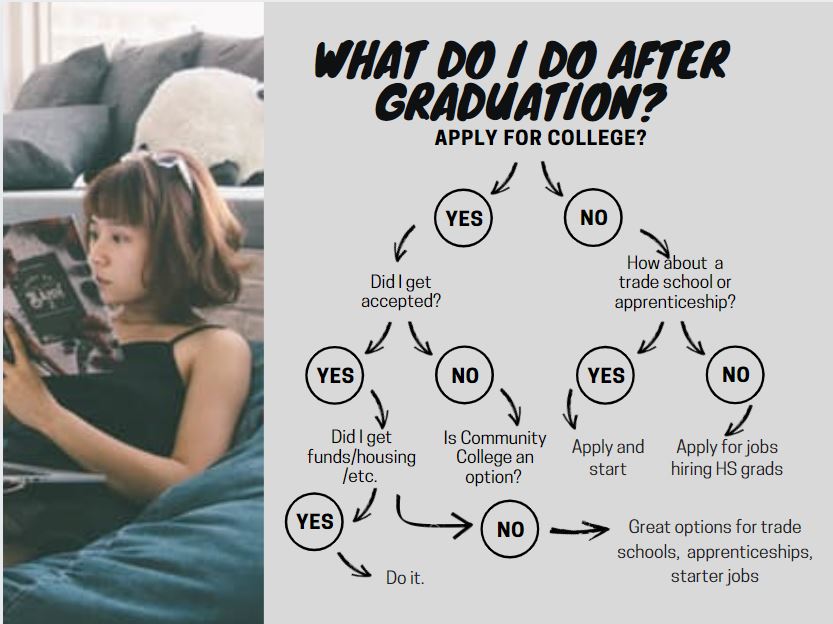From the Ask a Tech Teacher team: ideas on a student-run genius bar:
How to Help Students Run a Genius Bar
Modeled after Apple’s popular tech support stations, a Genius Bar in a school setting is a student-run help desk where peers provide tech support, advice on digital tools, and assistance with various tech-related issues. Teachers play a crucial role in guiding students to run this service effectively, ensuring it becomes a valuable resource for the entire school community.
By providing the necessary support and structure, teachers can help students develop leadership, teamwork, and problem-solving skills through the Genius Bar.
Understanding the Concept of a Genius Bar
The primary goal of a Genius Bar in a school is to create a space where students can help each other with technology-related problems, whether it’s troubleshooting a software issue, learning how to use new applications, or getting advice on digital projects. This initiative improves the technological literacy of the student body but also encourages a culture of peer-to-peer learning and collaboration.
The benefits extend beyond technical skills, as students involved in running the Genius Bar gain valuable experience in communication, customer service, and teamwork.
1. Select and Train Student Leaders
Teachers can create an application process to identify suitable candidates, considering factors such as their technical knowledge, communication skills, and ability to work in a team.
Once selected, these students will need proper training to equip them with the necessary skills and knowledge to run the Genius Bar effectively. Training can include workshops, online courses, and hands-on practice sessions.
Teachers who have pursued an online master’s in education can play a pivotal role in this training process. With their advanced understanding of educational technology and instructional strategies, they can provide tailored training programs that address the specific needs of the Genius Bar. They can also mentor student leaders, offering guidance on how to handle various technical issues, manage time effectively, and improve their customer service skills. This mentorship not only enhances the effectiveness of the Genius Bar but also provides student leaders with valuable insights and learning experiences.
2. Create a Schedule
Creating a consistent and reliable schedule is essential for the Genius Bar to function smoothly. This schedule should outline the hours of operation, ensuring that the Genius Bar is available during peak times when students are most likely to need assistance. It’s important to balance the time commitment of student leaders with their academic responsibilities, so the schedule should be flexible and considerate of their other obligations. Teachers can assist in developing this schedule, ensuring that it accommodates the availability of student leaders while also meeting the demand for tech support.
A well-structured schedule helps maintain the reliability and accessibility of the Genius Bar, making it a dependable resource for the school community. Moreover, students can get their queries answered within the hours of operation mentioned on your schedule.
3. Promote the Genius Bar
Teachers and student leaders can utilize various channels to spread the word, such as school newsletters, social media platforms, and morning announcements. Creating engaging and informative posters to place around the school can also attract attention. Hosting a launch event or demo sessions where students can see the Genius Bar in action is another effective way to generate interest and encourage participation. The goal is to make the school community aware of the Genius Bar’s existence and the valuable support it provides.
4. Provide Necessary Resources and Tools
For the Genius Bar to operate efficiently, it needs to be equipped with the necessary resources and tools. This includes hardware such as computers, tablets, and smartphones, as well as software programs and applications that students commonly use. It’s essential to ensure that all equipment is up-to-date and functioning properly. Teachers can work with the school administration to secure funding for these resources, exploring options like grants, donations, or budget allocations. Additionally, having a library of reference materials and access to online tutorials can help student leaders troubleshoot issues and stay informed about the latest technological advancements.
5. Encourage Collaboration and Teamwork
Collaboration and teamwork are at the heart of a successful Genius Bar. Encouraging a culture of cooperation among student leaders can lead to more effective problem-solving and a more enjoyable working environment. Team-building activities and exercises can help strengthen the bonds between student leaders, fostering a sense of camaraderie and mutual support. Regular meetings and brainstorming sessions can also provide opportunities for students to share ideas, discuss challenges, and develop strategies together. Teachers can facilitate these activities, offering guidance and support to ensure that the Genius Bar operates as a cohesive unit.
6. Offer Continuous Support and Feedback
Ongoing support and feedback are essential to the continuous improvement of the Genius Bar. Teachers should schedule regular check-ins with student leaders to discuss their experiences, address any issues, and provide guidance. These sessions can be an opportunity to offer constructive feedback, recognizing the achievements of the student leaders while also identifying areas for improvement. Encouraging an open line of communication ensures that students feel supported and valued. Additionally, gathering feedback from the users of the Genius Bar can provide valuable insights into how the service can be enhanced.
By fostering a culture of continuous learning and improvement, the Genius Bar can adapt and evolve to better meet the needs of the school community.
Conclusion
The Genius Bar is a valuable initiative that can significantly enhance the technological proficiency and collaborative spirit within a school. By understanding its concept, setting clear goals, choosing the right location, selecting and training student leaders, and creating a reliable schedule, teachers can help students run an effective Genius Bar. Promoting the service, providing necessary resources, encouraging teamwork, offering continuous support, and evaluating success are additional steps that contribute to its success. Teachers, especially those with advanced education in instructional strategies, play a pivotal role in guiding and mentoring student leaders, ensuring the Genius Bar becomes a thriving hub of innovation and learning. With the right support and structure, the Genius Bar can become an indispensable part of the school community, benefiting both students and staff.
–image credit to Deposit Photo
Here’s the sign-up link if the image above doesn’t work:
Jacqui Murray has been teaching K-18 technology for 30 years. She is the editor/author of over a hundred tech ed resources including a K-12 technology curriculum, K-8 keyboard curriculum, K-8 Digital Citizenship curriculum. She is an adjunct professor in tech ed, Master Teacher, webmaster for four blogs, an Amazon Vine Voice, CSTA presentation reviewer, freelance journalist on tech ed topics, contributor to NEA Today, and author of the tech thrillers, To Hunt a Sub and Twenty-four Days. You can find her resources at Structured Learning.







































Awesome idea! I love empowering students.
I loved this idea in my school. As did the kids!